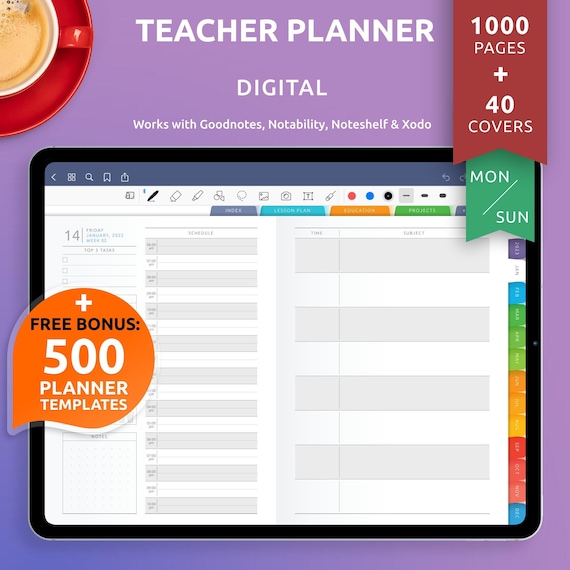How to Maximize Learning with Interactive Teaching Programs
How to Maximize Learning with Interactive Teaching Programs
Transform Your Classroom with Engaging Digital Tools That Boost Student Performance
Interactive teaching tools have revolutionized education, creating dynamic environments where students actively engage in their learning journey. With features like gamification, real-time feedback, and personalized learning paths, these programs deliver remarkable results - including up to 28% improvement in student performance and 94% user satisfaction rates.
Benefits of Interactive Teaching Tools in Education

Enhancing Student Engagement
Active Participation Through Gamification
Interactive teaching tools transform passive learning into engaging experiences. By incorporating gamified features like quizzes, leaderboards, and rewards, these platforms encourage active participation. Research shows that gamification can boost educational performance by up to 75%, making lessons both enjoyable and effective.
Real-Time Feedback for Continuous Motivation
Instant feedback allows students to track their progress immediately, identifying areas for improvement while maintaining motivation. Studies from Tanzania revealed that interactive tools with discussion forums and multimedia content significantly enhance engagement, creating active learning experiences that improve retention rates.
Supporting Diverse Learning Styles

Multi-Sensory Learning Options
Every student learns differently. Interactive platforms offer visual aids like videos, auditory resources like podcasts, and kinesthetic activities like drag-and-drop exercises. This variety ensures no student is left behind, creating inclusive and effective digital courses.
Personalized Learning Paths
Adaptive platforms customize content based on each student's pace and skill level. With 88% of students in grades 4-6 reporting satisfaction with interactive tools, personalized paths build confidence while improving understanding and outcomes.
Encouraging Collaboration and Communication
Collaboration forms the cornerstone of effective learning. Interactive teaching tools facilitate group projects and discussions through shared workspaces and forums. Institutions using gamified systems report a 50% increase in collaborative projects, demonstrating how these tools foster teamwork and prepare students for real-world scenarios.
Peer-to-peer learning opportunities through breakout rooms and live Q&A sessions enhance understanding while building essential communication skills. PageOn.ai's collaborative features help visualize group ideas and concepts, making complex discussions more accessible and engaging for all participants.
Streamlining Administrative Tasks
Automated Grading and Tracking
Interactive programs simplify administrative work through automated grading and attendance tracking. These systems evaluate assignments instantly, ensuring accuracy while saving hours of manual effort. Automated attendance recording during live sessions maintains precise records, allowing educators to focus on quality teaching.
Centralized Resource Management
Centralized platforms provide a single location for lesson plans, assignments, and multimedia content. This organization enhances communication between teachers, administrators, parents, and students. Data analysis integration helps make informed decisions, creating more efficient learning environments.
Student Performance Improvements with Interactive Tools
Key Features to Look For in an Interactive Learning Platform
Interactivity and Engagement Tools

Live Interaction Features
Essential tools include live polls, quizzes, and breakout rooms that create dynamic learning environments. These features encourage real-time participation, with live polls gauging understanding instantly while breakout rooms foster small group collaboration.
Gamification Elements
Points, badges, and leaderboards transform lessons into enjoyable experiences. Gamified platforms adapt challenges to each student's skill level, improving academic performance while building confidence and enthusiasm.
Compatibility and Accessibility
Reliable platforms must work seamlessly across laptops, tablets, and smartphones. Cross-platform functionality ensures students can access materials anytime, anywhere. Mobile learning tools have proven to enhance accessibility and engagement, providing consistent experiences regardless of device.
Accessibility features like screen readers and voice commands help students with disabilities participate fully. These tools promote social skills and increase attention, with mobile devices enabling personalized sessions tailored to individual needs. PageOn.ai's visualization tools make complex information accessible to all learners, regardless of their abilities.
Data Security and Privacy
With education facing increased cyberattacks in 2022, data security remains paramount. Platforms must comply with educational data protection laws, using advanced encryption and authentication methods to safeguard student information.
Secure storage and sharing features prevent unauthorized access, maintaining trust with students and parents while ensuring operational integrity.
Analytics and Reporting
Powerful analytics tools track student progress through metrics like engagement, completion rates, and attendance. User-friendly dashboards display individual and group performance, helping educators identify students needing additional support.
Beyond tracking, analytics provide insights for improving teaching strategies. Reports on user engagement reveal which resources resonate most with students, while satisfaction reports offer qualitative feedback. This data-driven approach ensures strategies remain effective and adaptive to student needs.
Interactive Teaching Implementation Process
flowchart TD
A[Identify Learning Objectives] --> B[Select Platform Features]
B --> C[Align with Student Needs]
C --> D[Create Interactive Content]
D --> E[Implement Gamification]
E --> F[Monitor Analytics]
F --> G[Gather Feedback]
G --> H[Adapt Strategies]
H --> I[Measure Outcomes]
I --> J[Continuous Improvement]
style A fill:#FF8000,color:#fff
style E fill:#42A5F5,color:#fff
style I fill:#66BB6A,color:#fff
Strategies for Effective Use of Interactive Teaching Programs
Planning and Structuring Lessons

Aligning Features with Objectives
Maximize benefits by aligning platform features with lesson goals. Use live polls and quizzes for critical thinking development. Gamification elements like leaderboards can enhance performance by up to 75%. Active learning approaches reduce failure rates by 33% compared to traditional methods.
Incorporating Multimedia Elements
Transform online learning with videos, animations, and infographics. Visual content makes complex topics accessible, while podcasts serve auditory learners. Studies show a 35% increase in engagement when multimedia is integrated into lessons.
Fostering Collaboration and Teamwork
Shared workspaces enable group projects even in online settings. Form strategic groups of 3-5 members with clear objectives and roles. Institutions using gamified systems saw a 50% increase in collaborative projects, highlighting teamwork's educational value.
Peer feedback and discussions deepen understanding while improving communication skills. Breakout rooms and forums facilitate meaningful interactions, fostering supportive environments where students learn from shared insights and experiences.
Monitoring and Enhancing Engagement
Using Analytics Effectively
Analytics features help identify disengaged students through participation rates and quiz scores. Adaptive platforms personalize content based on performance, ensuring every student receives needed attention.
Adapting Based on Feedback
Use analytics insights to refine teaching strategies. If students perform better on interactive quizzes, incorporate more into lessons. Continuous improvement creates inclusive, supportive environments.
Providing Training and Support

Workshops help educators and students maximize platform benefits. Hands-on sessions explore features like quizzes, gamification, and analytics. Regular updates ensure you stay informed about best practices and new functionalities.
User guides and troubleshooting resources ensure smooth implementation. Well-designed guides include step-by-step instructions and screenshots. Customized resources addressing your classroom's unique challenges empower confident platform use.
💡 Tip: Combine workshops with user guides to create comprehensive support systems, ensuring everyone feels prepared and supported for better outcomes.
Case Studies and Examples of Successful Implementations

Example 1: XYZ High School
Gamified Learning Success
XYZ High School transformed classrooms using gamified learning with quizzes, leaderboards, and rewards. Students competed in friendly challenges, making complex topics enjoyable. One student overcame their fear of math by earning points and badges, gaining confidence and improving skills. Teachers reported 85% expressing excitement about designing interactive lessons.
Real-Time Feedback Results
Real-time feedback tools allowed instant progress tracking and personalized support. Results were remarkable: 35% increase in engagement, 70% improvement in retention rates, and 20% rise in graduation rates.
Example 2: ABC University
Enhanced Collaboration
ABC University implemented collaboration tools with shared workspaces and discussion forums. Students brainstormed and completed assignments together, even remotely. Professors noted significant improvements in teamwork and critical thinking skills.
Performance Outcomes
Student satisfaction scores increased by 40%, with assignment completion rates also rising by 40%. These tools streamlined communication and fostered community, preparing students for real-world teamwork scenarios.
Example 3: DEF Middle School
Overcoming Implementation Challenges
DEF Middle School initially faced technology adaptation challenges. Through organized workshops and user guides, teachers gained confidence. Classrooms became more organized and emotionally supportive, with students showing increased focus.
Best Practices Learned
Key lessons: Training and resources are essential for overcoming resistance. Regular workshops and accessible guides ensure effective platform use. By listening to feedback and continuously improving, the school achieved higher standardized test scores.
Case Study Success Metrics

💡 Tip: Investing in training and support helps overcome challenges and achieve long-term success with interactive teaching programs.
Recommended Tools for Educators and Students
Top Interactive Learning Platforms
Google Classroom
Simplifies lesson management with tools for creating, distributing, and grading assignments. Seamlessly integrates with Google tools, ensuring cross-device compatibility. Features group assignments and discussion threads for enhanced collaboration.
Kahoot!
Transforms learning through gamification with quizzes, polls, and challenges. Vibrant interface motivates active participation. Real-time interaction and analytics provide performance insights, boosting motivation and retention.
PageOn.ai: A Comprehensive AI-Powered Tool

PageOn.ai leverages artificial intelligence to revolutionize education through personalized learning experiences. The platform analyzes performance data to recommend tailored resources, ensuring every learner progresses at their own pace.
Key Features:
- • Personalized Learning Paths: Customizes lessons based on individual strengths and weaknesses
- • Advanced Analytics: Tracks progress with actionable insights for teaching improvement
- • Accessibility Features: Includes text-to-speech and screen readers for inclusive learning
- • Data Security: Complies with educational data protection laws
Step-by-Step Implementation Guide:
- 1 Sign up and configure your teaching preferences
- 2 Create interactive lessons with multimedia content and AI-powered visualizations
- 3 Assign personalized activities based on student needs
- 4 Monitor engagement and performance through analytics dashboards
- 5 Refine strategies using AI-generated insights and recommendations
Experts emphasize responsible AI implementation to address fairness and privacy concerns. PageOn.ai's visualization capabilities help transform complex educational data into clear, engaging visual narratives that enhance understanding for all learners.
Tips for Making Online Teaching More Interactive and Engaging
Incorporating Gamification

Leaderboards and Rewards
Create friendly competition with leaderboards while providing tangible recognition through badges and certificates. Studies show 67.7% of students find gamified courses more motivating, with one California college reporting 40% increase in assignment completion.
Interactive Challenges
Design puzzles aligned with lesson objectives to stimulate critical thinking. Research shows 150% increase in participation when gamification is introduced, with higher accuracy in submitted solutions.
Leveraging Multimedia Content
Videos, animations, and infographics make complex topics accessible. Meta-analysis of 50 studies found video clips significantly boost learning outcomes. Virtual and augmented reality create immersive experiences, allowing students to explore impossible scenarios like virtual field trips or lab experiments.
PageOn.ai's AI Blocks feature enables creation of modular visual diagrams, breaking down complexity into understandable segments. This visual approach helps bridge the gap between technical complexity and clarity, making insights accessible to any audience.
Encouraging Student Participation
Live Q&A sessions and discussions boost participation by encouraging questions and idea sharing. A Denver high school reported 30% rise in attendance after incorporating interactive discussions.
Allowing students to create and present content empowers ownership of their learning. Projects where students design presentations build confidence and communication skills while fostering collaboration through peer feedback.
Using AI Tools for Personalization

AI tools analyze performance data to create personalized learning paths. Students using AI report better time management and higher GPAs. These platforms act as virtual tutors, with 88% of students favoring AI assistance for complementing traditional teaching.
Instant feedback and recommendations are AI's cornerstone features. After completing quizzes, students receive detailed insights immediately. With 97% of students recognizing AI's significance in enhancing learning, these tools generate tailored materials addressing individual challenges.

Note: While AI tools offer numerous benefits, they work best when combined with human guidance. Use these platforms to complement your teaching, not replace it.
Transform Your Teaching Today
Interactive teaching tools have reshaped education by making learning more engaging and effective. These programs cater to diverse needs, improve collaboration, and simplify teaching tasks. By choosing the right platform and implementing strategies like gamification and multimedia integration, you can create powerful learning experiences.
Tools like PageOn.ai provide personalized, AI-powered solutions that help you visualize complex concepts and create successful online learning environments. With features supporting every learning style and comprehensive analytics to track progress, you can empower students to achieve better outcomes while making teaching more impactful.
You Might Also Like
Print vs Digital Design: Navigating Today's Hybrid Market Landscape
Explore the evolving relationship between print and digital design disciplines, with insights on market trends, strategic applications, and essential skills for cross-disciplinary designers.
Mastering the Five Essential Sales Tonalities for Top Performance | PageOn.ai
Master the five essential sales tonalities - curious, confused, concerned, challenging, and playful - to transform your conversations and achieve top sales performance.
Mastering Your Inner Landscape: Building Personal Power Through Boundaries and Self-Awareness
Discover how to build personal power through effective boundary-setting and self-awareness. Learn practical visualization techniques to transform your relationships and achieve authentic growth.
Mastering the Three-Body Structure for Compelling Business Presentations | PageOn.ai
Transform ordinary business presentations into compelling visual narratives using the three-body storytelling structure. Learn techniques for creating impactful openings, persuasive middles, and inspiring closings.
